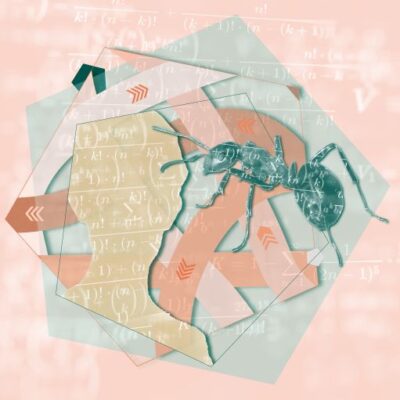Der Lehrstuhl für Verhaltensforschung an der Universität Bielefeld war der erste seiner Art an einer deutschen Universität, als er im Wintersemester 1973/74 gegründet wurde. In 50 Jahren Forschungsarbeit hat sich der Fokus der Wissenschaftler*innen verändert – von der Beobachtung des Verhaltens einer ganzen Tierart zur Betrachtung des individuellen Verhaltens der einzelnen Tiere und von viel beachteter Pionierarbeit bis zur internationalen Spitzenforschung.
„Es war Klaus Immelmann, der sich seit seiner Berufung im Jahr 1973 um den Aufbau des Gebäudes der Verhaltensforschung und der dafür erforderlichen Tierhaltung bemühte“, berichtet Professor Dr. Oliver Krüger, der heutige Leiter des Lehrstuhls Verhaltensforschung an der Fakultät für Biologie. Vor allem Zebrafinken wurden zu Forschungszwecken gezüchtet.
Unter der Leitung von Professor Dr. Klaus Immelmann entwickelte sich die Abteilung für Tierverhalten in kurzer Zeit zu einem international führenden Zentrum der Verhaltensforschung. „Die ersten Forschungsfragen konzentrierten sich auf klassische ethologische und neuroethologische Fragestellungen wie die sexuelle Prägung und die Navigation von Tieren“, sagt Oliver Krüger. Bei Ethologie handelt es sich um die biologische Untersuchung des Verhaltens von Tieren. Neuroethologie bezieht in solche Untersuchungen die Aktivitäten von Nervenzellen ein.
It’s like a sickness of scientists.
I can’t stop to be curious and motivated in finding out new things.
And it’s really like observing animals and finding out
why are they doing what we see them doing.
It is actually a historic building, although it doesn’t look like it.
It is the first department of animal behavior at any university in Germany.
It was founded on the 1st of November 1973,
and the first chair, Klaus Immelmann, made the department quite famous.
And hence, I believe this is indeed a historic place
and it is a wonderful place to work in because of the people who actually work here.
We study different facets of animal behavior
and we use different techniques, for example, machine learning,
but also molecular techniques to understand certain aspects of behavior.
And of course, in the long run, we hope to understand better
what is causing individual differences in behavior.
But we are also open
to all the new aspects that are hopefully coming in the future.
Behavior of animals is quite diverse,
and that’s why the research on this topic is also quite diverse.
We work with milligram heavy insects
and we see elephants that almost weigh a ton.
And as different as those animals are, are the behaviors we look at.
We do have such a variety of model systems.
In the lab we work with zebra finches and other estrildid finches.
Outside the university building,
There are the birds of prey.
So we work with goshawks, buzzards, eagle owls.
Even further afield we have long term field studies on Galapagos sea lions.
There is a long term project on Madagascar on different species of plovers.
So I think it’s the breadth and variety of model system
that really characterizes our approach to animal behavior.
For example, in the fire salamander research, where we are actually
currently looking at how much are these individuals moving in
their habitat and is there a difference between males and females?
Is there a difference between different individuals?
And in the long run, we really hope to understand
what is causing these differences.
In our department there is over 50 people.
So it’s a quite big department.
And in conjunction with Barbara Caspers and Klaus Reinhold,
there’s almost 90 people here studying all kinds of aspects
of the behavior ecology and evolutionary ecology
of a whole range of organisms, from insects to mammals and birds.
And I think that also makes this department unique,
that we have such a kind of big force of people interested in let’s say:
The over realm of animal behavior.
Whenever I tell anybody else that we help each other with money,
with space, with instruments, they usually have never heard of that.
And this is really perfectly done here in this building.
So there are many possibilities that people meet, chat often about science
or even work together from different groups,
and it doesn’t matter from which group they are.
We have an international team of scientists here
that have very different questions and that focus on different
animal species as well as different questions.
And that is something that is so inspiring on a daily routine
that I think there is no better place to work.




